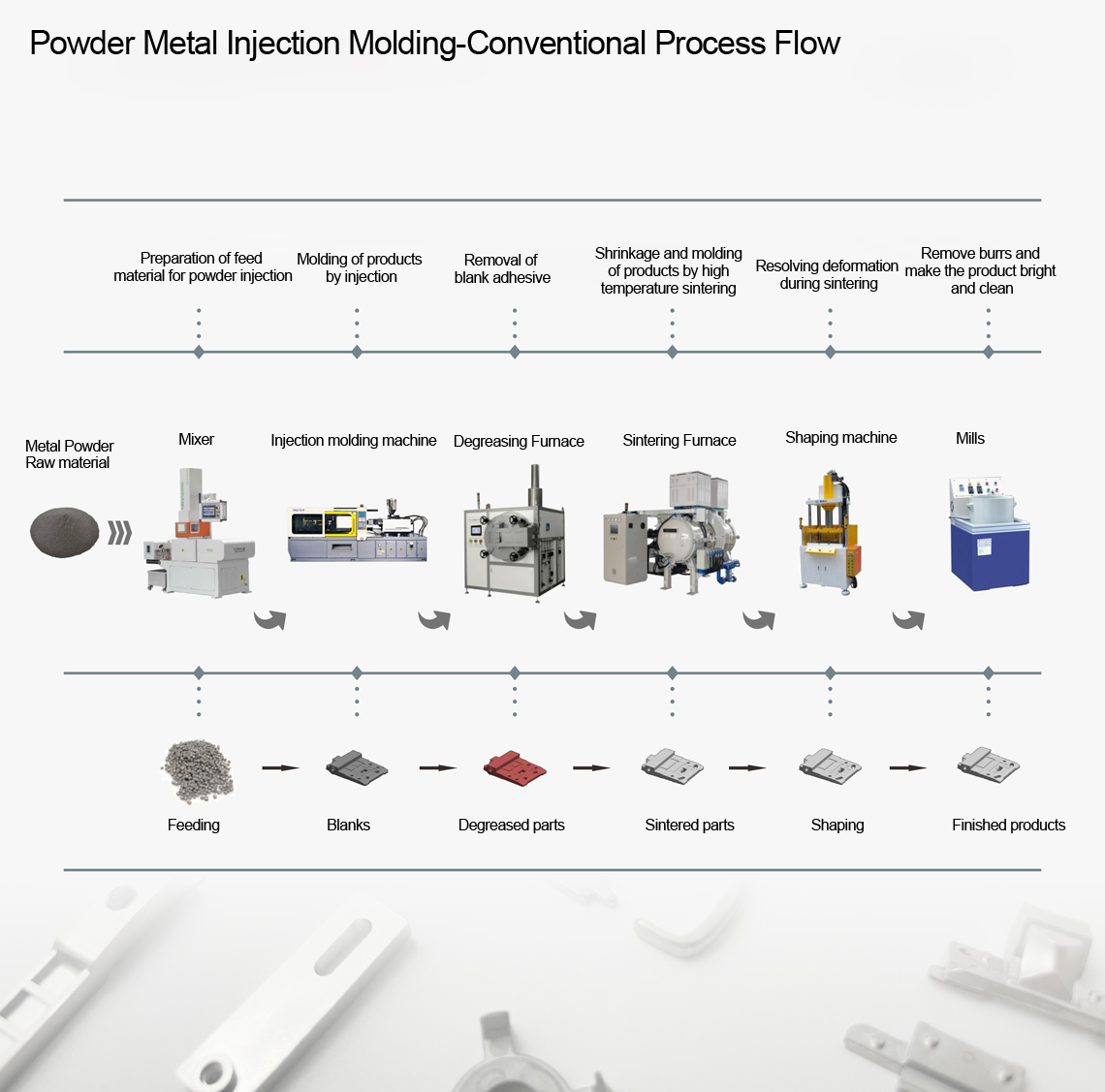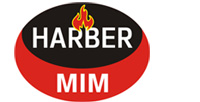Overview of Metal Injection Molding
MIM is a brand-new metal parts near net molding processing technology formed by introducing modern plastic injection molding technology into the powder metallurgy field, which is a high-tech technology that has been carried out very rapidly in the powder metallurgy discipline and industrial field in recent years.

One of the newest metal processing technologies, MIM (Metal Injection Molding) was created by combining traditional plastic injection molding technology with powder metallurgy (PM) technology. Using metal molds for injection molding makes it easy to manufacture otherwise difficult parts, including miniature, precision, complex shapes and three-dimensional parts.MIM is also ideally suited for mass production, with our ability to produce 5,000 to 1 million parts per month.MIM is best suited for parts weighing between 0.05g and 50g, but it can also be used to mass produce parts weighing up to about 400g.
MIM Process

Metal Injection Molding (MIM) is a process in which powdered metal is mixed and placed into a mold to create solid parts and devices. The mixture of powdered metal and bonding material (called feedstock) is available in limited quantities, making MIM ideal for making small, delicate parts. Areas of application for this process include machine parts, dental tools and firearms equipment, all of which typically involve small and complex metal parts.
Powder metallurgy technology determines which types of metals can be made into powders for the metal injection molding process. There are various methods of making metal powders, such as physical deposition, grinding, atomization, chemical reaction or centrifugal separation. The type of powder strategy depends greatly on the type of metal to be powdered and its specific quality.
Once the metal powder is produced it is mixed with a binder, which is a material consisting of various waxes and plastics. The blended mixture is known as the feedstock and is ready to be injected into the mold. Since the feedstock is similar to the molten plastic used in normal injection molding, the same injection molding equipment can be used for metal injection molding. The feedstock is injected into the injection molding equipment in small amounts, called injection molding, and then cooled in the mold.
Once the cooling is complete, some of the bonding material is removed from the part, usually by a solvent or chemical reaction, but sometimes the part is heated to melt the adhesive. At this point, the part contains a significant portion of voids, about 2% to 4% of the total volume, a stage known as the "browning stage." The metal is then made stronger and denser by the sintering process. During sintering, the metal is heated to a temperature slightly below its melting point until the surfaces of the metal particles are fused together, while still maintaining the structural integrity of the part. The result is a metal part with a solid density of up to 99%.
With minor modifications, the part is complete and ready for use. Because metal injection molding requires the use of a mold, it is a much more flexible technology and ideal for complex, delicate parts. Other metal technologies often require high costs to produce the same products, so metal injection molding is becoming an increasingly popular technology for manufacturing these parts.
Metal injection molding (MIM) is a manufacturing solution that uses the shaping advantage of the injection molding technology. MIM, using fine (<20 um) metal powder, is capable of transforming complex concepts & designs into high precision, complex geometry net-shaped products from a wide range of materials such as carbon steels, low alloy steels, stainless steels, low expansion alloys (kovar and invar), tool steels, soft magnetic alloys, super alloys and non-ferrous materials like tungsten and copper. MIM is ideal for the mass production of intricate engineering parts in medium to high volumes (over 10,000 parts annually). It is well suited for parts weighing from 0.05 gm to 250 gm. Wall thickness is typically about 0.7 mm (0.003 in). However, Harber Industrial Limited has demonstrated the possibility of producing parts with 0.3 to 0.7mm wall thickness. Tolerances are on the order of ±0.3 to 0.5%, albeit specific dimensions can be held as close as ±0.1%.
The mim metal production technologies discussed above, as well as CNC machining metal fabrication, are available on Harber's online manufacturing platform.
Get an instant quote for metal parts
Get an instant quote by uploading your CAD files to https://www.harbermetal.com/Instant-Quote/.
There you can specify your products material, surface finish, threaded holes, tolerances and lead time. You can also confirm manufacturability using our instant DfM feedback.
Supported file types:
.step, .stp, .iges, .x_t, .x_b, .sldrpt, .ipt, .3dxml, .prt, .sat, .cgr, .3dm, .catpart, .scad (max file size: 250 MB)
All uploads are secure and confidential.
Additional resources
To learn more about metal injection molding manufacturing technologies, check out this collection of articles and guides to help you delve deeper:














